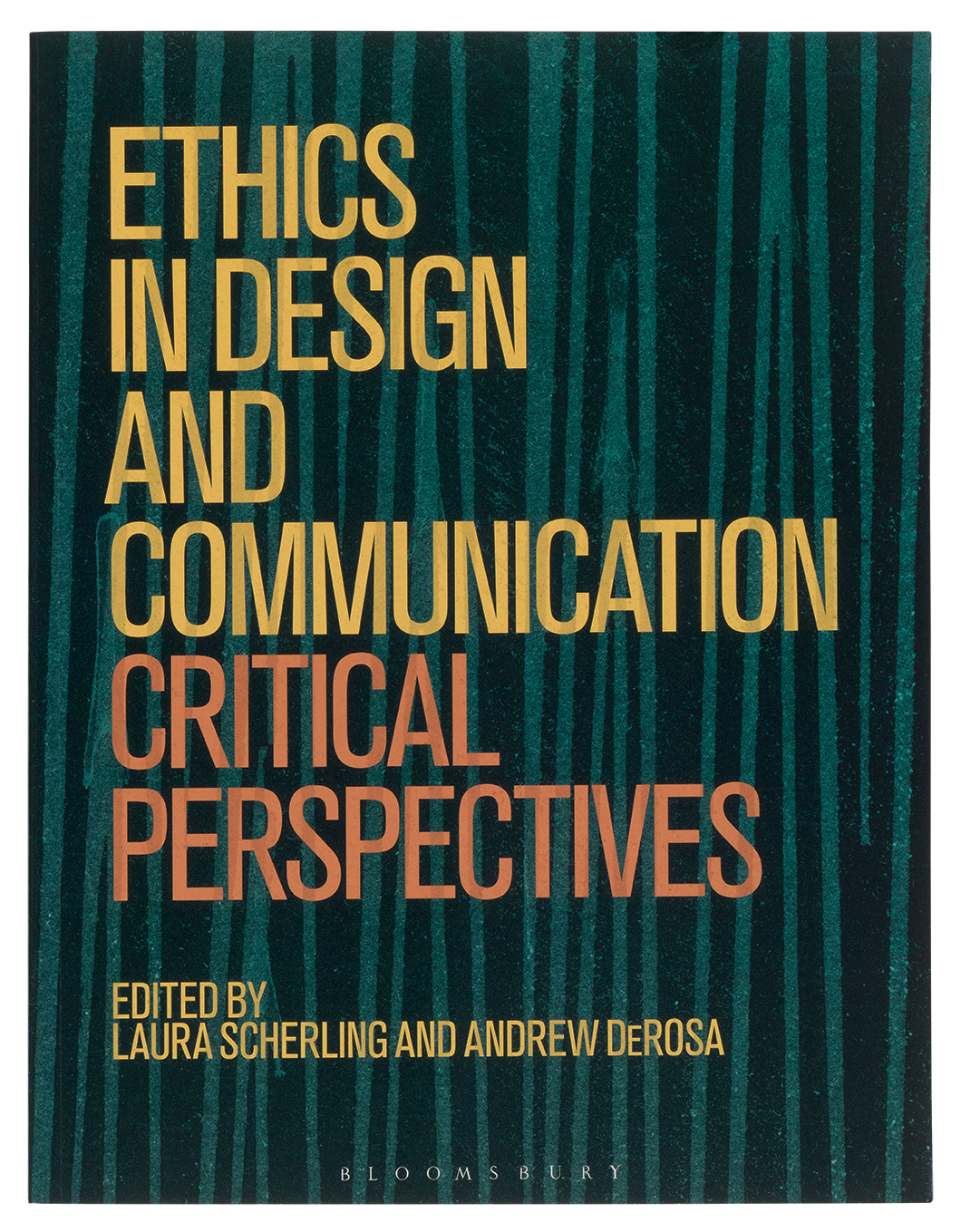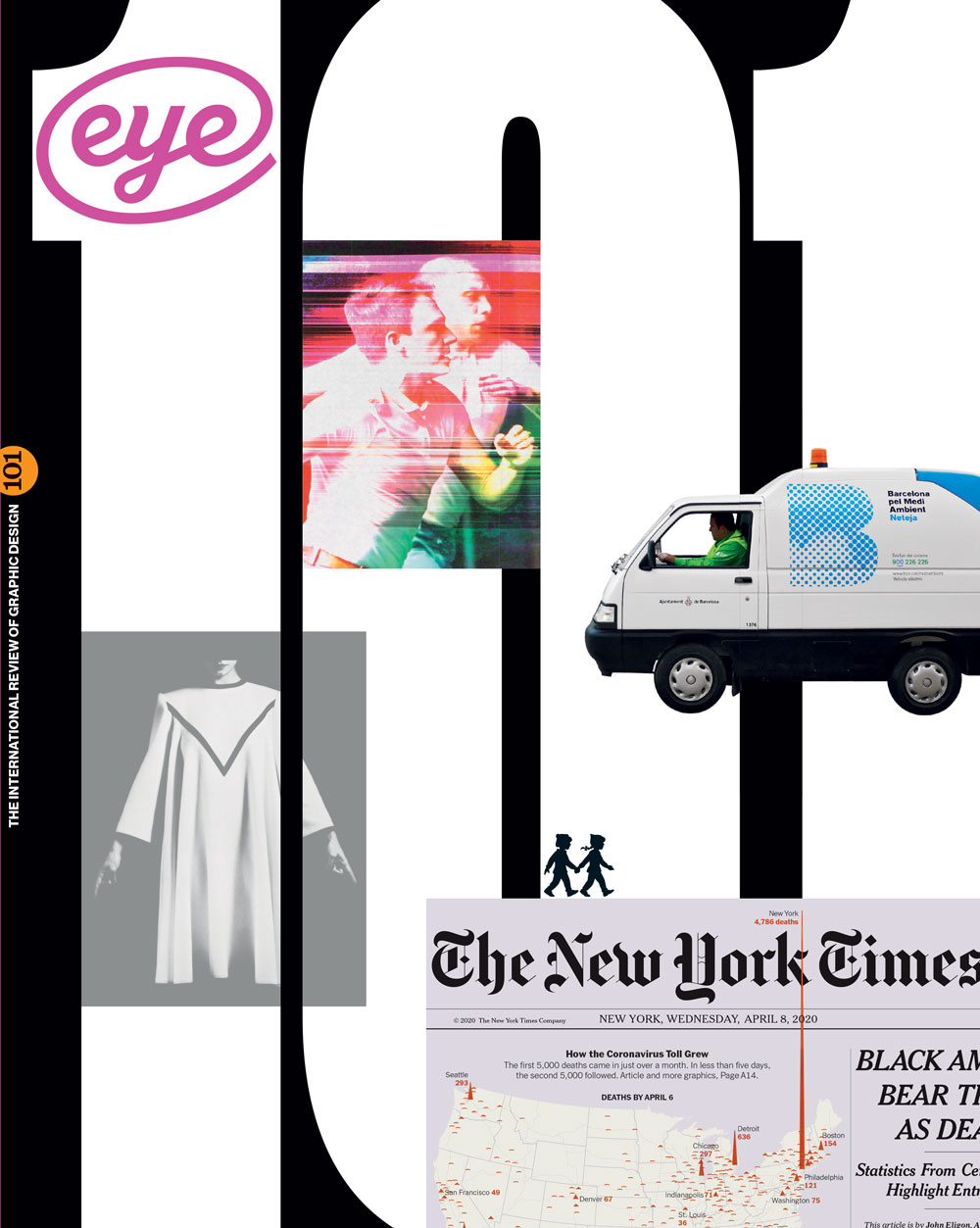Summer 2021
A rallying cry for ethics
various designers
Daniel Benneworth-Gray
Critical path
Design education
Design history
Graphic design
Reviews
Ethics in Design and Communication: Critical Perspectives
Edited by Laura Scherling and Andrew DeRosa. Foreword: ‘Assumptions of Ethics and Agency in Design’ by Johanna Drucker, Bloomsbury, £22.99, $30.95 (paperback)
There could not be a more apt time for the publication of Ethics in Design and Communication: Critical Perspectives. 2020 is already marked as a year of unprecedented imbalance, illustrated by the social inequities that were revealed through the coronavirus pandemic, political turmoil, and systemic racism that prompted protests around the world. This book highlights how design can either help or hinder humanity on a social, political and economic level. As the book demonstrates, it’s complicated.
This collection of essays by authors representing eleven countries and edited by Laura Scherling and Andrew DeRosa, throws into question what it means to do good, to be just, and to do no harm in all the various manifestations of design – from UX/UI and VR/AR to data visualisation, design activism, urban planning and design pedagogy. Even grassroots design interventions are tackled in this critical compilation. The book leaves the reader with far more questions than answers, but the issues that are investigated are big and are linked to a far greater network than the design industry alone.
Designers work within a system that operates and survives because of certain levels of moral corruption. Much of the design industry supports consumption, consumerism and capitalism and all the messiness that goes along with it like exploitation, climate change and ecological damage. It is pretty bleak. In the foreword, Johanna Drucker lobs us the first question to make us regret any boasts about our design-for-good efforts: ‘If we perform “ethical work” while continuing to practise and live within the very systems that perpetuate the abuse we protest, then how does this amount to an ethical agenda?’
But not all the ethical responsibility is left to designers in this book. Jeffrey Chan’s essay refers to bikeshare programmes and how, by listening to user feedback about the inconvenience of having to find a docking station, a dockless bikeshare programme was created that allowed bikes to be parked anywhere safely. This convenience has revealed the ‘deficit of responsible behaviour’ in the users who simply dump bikes wherever they please, creating a public nuisance (page 6). It seems that this sense of entitlement far exceeds a sense of responsibility towards the greater good and behaviour change is difficult to bring about.
Or is it? Sarah Edmands Martin describes how the ‘binary sorting of people’ occurring on dating apps dehumanises users into commodities and how the ‘swipe left’ cultural phenomenon is affecting human behaviour. Martin along with many of the authors in this book are exposing how design is attempting to keep up with the speed of technological advancements without the necessary research into the long-term effects, even beyond the lifespan of the user experience. This alludes to another main theme that comes out of reading this book: research.
It is not that research is not done in the design industry; it just might need to be more rigorous, and more objective. In the chapter on pedagogy, David Gelb and Angela Norwood talk about the need for more research methodologies in the educational environment. Claiming that there is not enough time in a term to teach research methods is no longer a viable option if we are to ‘prepare students to navigate “inherently unstable” ground’, Sabrina Hall and Anjali Menon state that with the proper guidance, design students can be encouraged and empowered to become the change-makers of tomorrow.
By far the biggest concept that comes out of reading this book is that design practice is evolving at an incredible speed but the ethics of the field has not kept up. Ethics in Design and Communication: Critical Perspectives calls on the design community to reflect upon itself and to take more responsibility, so as to not be part of – or add to – the problems we face now and in the future. Designers have agency. With agency comes great responsibility: a responsibility in what – and for whom – we design.
Drucker recognises the commitment and desire for change that is contained within the pages of this book and speaks to how capable we are to make it happen. The fruits of our labour may not manifest in our lifetime but we can surely lay the foundations for large-scale transformation for the future.
Top. Cover of Ethics in Design and Communication. Design by Daniel Benneworth-Gray.
Saskia van Kampen, Assistant Professor, School of Design, San Francisco State University
First published in Eye no. 101 vol. 26, 2021
Eye is the world’s most beautiful and collectable graphic design journal, published for professional designers, students and anyone interested in critical, informed writing about graphic design and visual culture. It is available from all good design bookshops and online at the Eye shop, where you can buy subscriptions and single issues.

